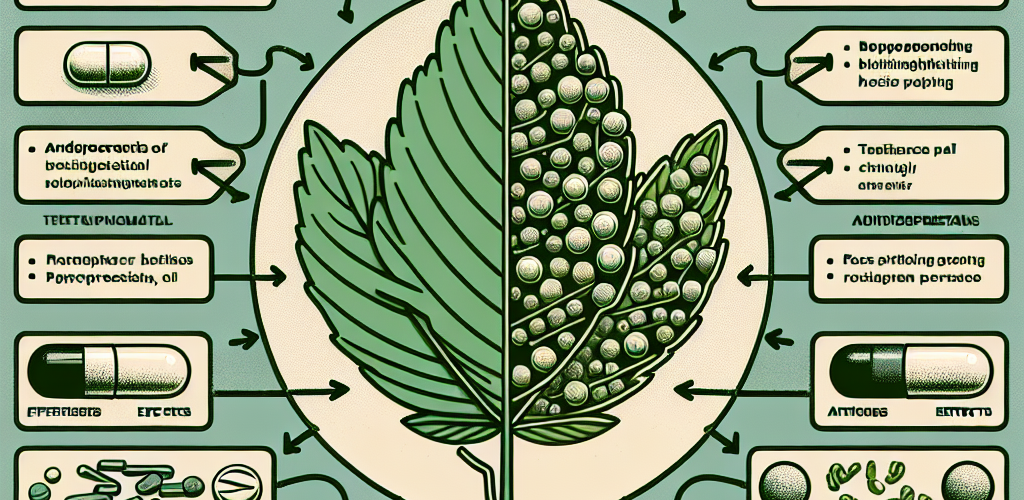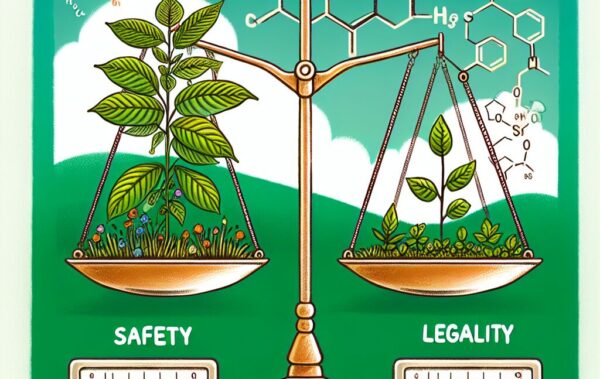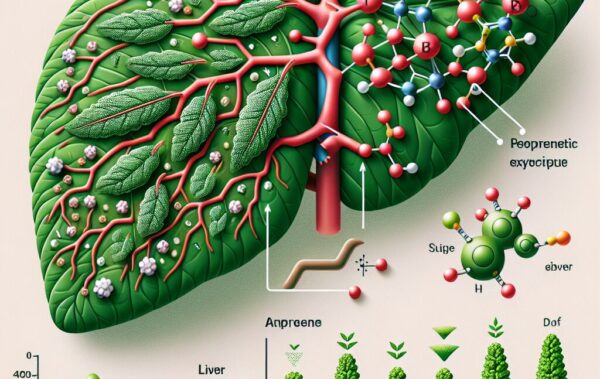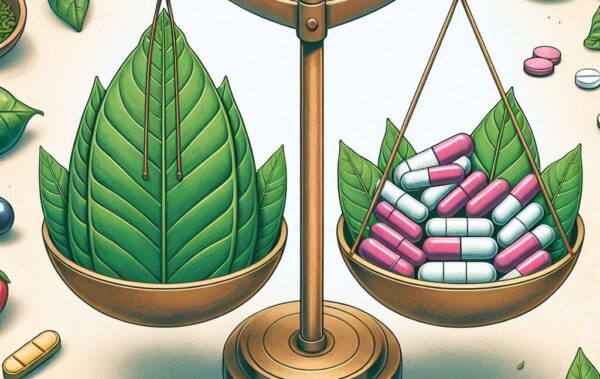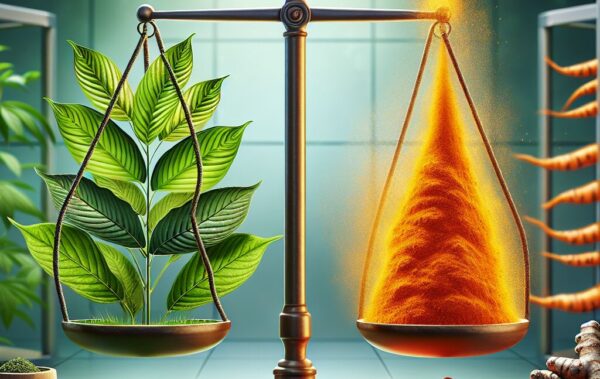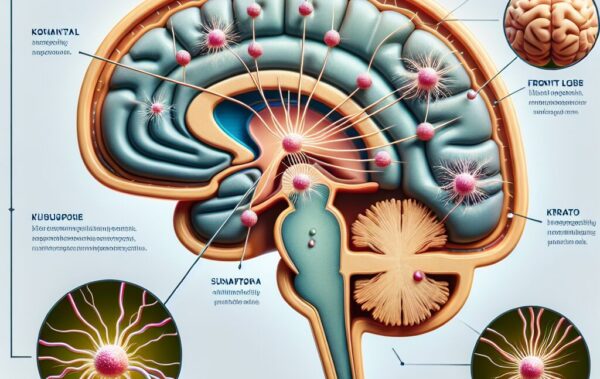- Understanding kratom and its effects
- Antidepressants overview and mechanisms of action
- Potential interactions between kratom and antidepressants
- Comparing kratom to traditional antidepressants
- FAQ on kratom and antidepressant use
Kratom, a tropical tree native to Southeast Asia, has garnered significant attention due to its potential impact on health and well-being, particularly in the context of mental health and depression treatment. Derived from the leaves of the Mitragyna speciosa plant, kratom contains a range of active compounds, the most notable being mitragynine and 7-hydroxymitragynine. These alkaloids are thought to interact with opioid receptors in the brain, producing effects that can be simultaneously stimulating at lower doses and sedative at higher ones.
Users often report that at lower doses, kratom can boost energy, enhance alertness, and increase sociability. In contrast, larger doses are typically associated with pain relief and a sense of calm euphoria, though the experience can vary significantly among different individuals. Due to these properties, kratom has been used traditionally as an herbal remedy in its native regions for centuries, treating a range of ailments from pain to fatigue to mood disorders.
The diverse profile of kratom’s effects can be partially attributed to the various strains available, each with its unique composition of alkaloids. For instance, Maeng Da kratom, known for its potency, is often sought after for its energizing effects, while Bali kratom is typically associated with relaxation and pain relief. Additionally, the Red vein kratom varieties are reputed for their soothing qualities, whereas White vein strains tend to promote alertness and focus.
Despite anecdotal support for its therapeutic uses, kratom’s legality remains a controversial subject in many countries, with concerns primarily revolving around its safety profile and potential for abuse. In the realms of formal research and medicine, kratom has not been as thoroughly studied as other substances. As such, there is less standardized information available on dosing, side effects, and long-term impacts of its use. Kratom’s unpredictability, combined with the variations in purity and concentration when sourced from different vendors, underscores the importance of approaching its use with caution, especially when self-managing mental health concerns like depression or anxiety.
Given the growing interest in alternative treatments for mental health, many individuals are curious about kratom’s potential as an adjunct or substitute for traditional pharmacotherapy, including antidepressants. This curiosity merits a closer look at the ways kratom could interact with these medications. Understanding how kratom’s alkaloids operate within the body is a starting point for grasping the complexity of any such drug interactions. This knowledge is critical for those considering integrating kratom into their depression treatment plan or for those who simply wish to explore its touted benefits for mood enhancement and emotional regulation, always mindful of the need for informed choices and responsible use.
Antidepressants overview and mechanisms of action
Antidepressants are a class of drugs specifically designed to alleviate symptoms of depression by balancing certain neurotransmitters, or chemical messengers, in the brain. These medications, while not curing depression, can significantly improve quality of life for those who suffer from moderate to severe instances of the condition. To understand their function, we must delve into the mechanisms by which they act within the human body.
At their core, antidepressants focus on the intricate pathways of neurotransmitters such as serotonin, norepinephrine, and dopamine—chemicals that have a profound impact on mood, emotion, and cognition. The various classes of antidepressants influence these neurotransmitters in different ways. For example, Selective Serotonin Reuptake Inhibitors (SSRIs), currently the most commonly prescribed antidepressants, work by blocking the reabsorption (reuptake) of serotonin into neurons, making more serotonin available to improve transmission of messages between neurons. Serotonin and Norepinephrine Reuptake Inhibitors (SNRIs) perform a similar function but target norepinephrine as well as serotonin.
Tricyclic antidepressants (TCAs) are an older class of medications that affect multiple neurotransmitters; they’re typically used when SSRIs do not provide relief. Monoamine Oxidase Inhibitors (MAOIs), another older group of medications, work by preventing the breakdown of monoamine neurotransmitters, thereby increasing concentrations in the brain. Despite their effectiveness, MAOIs are less commonly used due to dietary restrictions and potential drug interactions that come with their use.
Each of these classes operates on the premise that boosting levels of critical neurotransmitters will enhance and stabilize mood. However, it’s important to recognize that antidepressants can take several weeks to exhibit their full effects and the journey to finding the most effective medication or combination of medications is highly individualized.
Drug interactions are a significant concern when dealing with antidepressants due to their impact on the brain’s chemistry. Adding another substance with similar or opposing pathways can either amplify side effects or diminish the therapeutic effect. Kratom, with its own unique interaction with opioid receptors, presents a complicated scenario when used concurrently with antidepressants.
The need for careful consideration and often medical supervision becomes apparent when contemplating the use of kratom alongside traditional depression treatment. This caution is underscored by kratom’s status as a less studied substance, which may lead to unpredictable outcomes when combined with the well-researched mechanisms of antidepressants.
For individuals exploring avenues to manage their mental health, careful research and consultation with healthcare providers is crucial in understanding the safe and effective use of any treatment. Those interested in the broad spectrum of kratom’s effects can find a wealth of options, such as kratom powders, capsules, and extracts, allowing for personalized administration suited to their unique needs. As always, responsible use and adherence to recommended guidelines remain paramount in the journey to mental wellness.
Potential interactions between kratom and antidepressants
When considering the potential interactions between kratom and antidepressants, one must recognize the fine balancing act performed by medications in managing mental health conditions. There is concern that kratom, with its numerous active compounds, could lead to a range of drug interactions that merit serious consideration for anyone currently undergoing depression treatment.
As a complex plant, kratom acts on various neurotransmitter systems, notably opioid receptors, which may influence mood and perception of pain. This activity intersects with the delicate neurological pathways targeted by antidepressants, which are aimed at regulating neurotransmitters such as serotonin and norepinephrine. The potential for interference arises when the modulation of these neurotransmitter systems by antidepressants is disrupted or altered by the introduction of kratom.
It’s conceivable that kratom could either enhance or inhibit the effects of antidepressants. For example, since kratom can produce mood elevation and anxiolytic effects, there might be an additive or synergistic effect when used in combination with SSRIs or SNRIs. However, this could increase the risk of serotonin syndrome, a potentially life-threatening condition characterized by high levels of serotonin in the brain. On the flip side, kratom’s sedative effects at higher doses could potentially counteract the intended benefits of certain antidepressants, leading to increased drowsiness or lethargy.
Furthermore, the metabolism of both kratom and many antidepressants occurs in the liver, primarily involving the cytochrome P450 system. This poses another possible interaction where kratom could potentially inhibit the enzymes necessary for the metabolism of certain antidepressants, thereby increasing their levels and risk of side effects. Conversely, some antidepressants might also impact the breakdown of kratom’s alkaloids, altering its efficacy and safety profile.
It is also worth noting that kratom itself can lead to dependence and withdrawal symptoms, which may be complicated further by the use of antidepressants. The uncertainties of long-term kratom use, combined with potentially unpredictable interactions, underscore the importance of monitoring and medical guidance when considering the use of kratom as part of a depression treatment protocol.
For individuals keen to explore the potential benefits of kratom for mood enhancement or pain relief, it’s imperative to consult with a healthcare provider, particularly if one is already using antidepressants. This dialogue ensures a fuller understanding of the risks tied to drug interactions and the personal health implications therein.
Those curious about the different forms of kratom can investigate a variety of products, although it is crucial to approach any new supplement with caution, particularly when other medications are in the mix. Options range from kratom powders to capsules, and even liquid extracts, offering flexibility in how one might wish to incorporate kratom into their wellness routine should they choose to do so.
When navigating the realm of mental health and depression treatment, the utmost priority is safety and efficacy. Every individual’s journey is unique, and when adding kratom into the equation, one must tread with informed caution, particularly due to the complexity of potential drug interactions with antidepressants.
Comparing kratom to traditional antidepressants
 When juxtaposing kratom with conventional antidepressants, a multifaceted comparison ensues, revealing both commonalities and differences in their application within depression treatment and mental health management. Kratom, with its multifarious effects stemming from alkaloid interactions with opioid receptors, contrasts notably with the more targeted approach of antidepressants, which are engineered to modulate specific neurotransmitters like serotonin and norepinephrine.
When juxtaposing kratom with conventional antidepressants, a multifaceted comparison ensues, revealing both commonalities and differences in their application within depression treatment and mental health management. Kratom, with its multifarious effects stemming from alkaloid interactions with opioid receptors, contrasts notably with the more targeted approach of antidepressants, which are engineered to modulate specific neurotransmitters like serotonin and norepinephrine.
One core distinction lies in kratom’s status within the medical community. Unlike traditional antidepressants, kratom has not received FDA approval for the treatment of depression or any other medical condition. This lack of formal recognition impacts not only its recommended use in clinical practice but also the depth of research available to validate its efficacy and safety. In traditional antidepressants, the rigorous process of randomized controlled trials, safety assessments, and peer reviews are seen as the cornerstone of their credibility and widespread adoption by the healthcare community.
Comparison extends into the realm of side effects and withdrawal potential. While both kratom and antidepressants carry risks of side effects, those associated with kratom can be less predictable due to the variability in strains, dosages, and individual user responses. Similarly, withdrawal symptoms can arise from both kratom and certain antidepressants, particularly SSRIs and SNRIs, which can cause discontinuation syndrome when therapy is abruptly halted.
Despite these differences, there are anecdotal echoes from individuals who find kratom beneficial in managing their mood and coping with certain symptoms of depression. This anecdotal support couched in personal testimonies of mood improvement and increased wellbeing suggests that kratom may hold potential as an adjunct therapy for mental health, offering an alternative route for those seeking herbal remedies over pharmaceutical options.
Those who advocate for kratom point to its ability to confer a natural, holistic option, citing instances where it serves as a bridge for those who find traditional antidepressants ineffective or intolerable due to side effects. This perspective opens a dialogue about the personal agency in managing one’s mental health, where individuals seek treatments aligning closer with their values and experiences.
This comparison would not be complete without addressing the legal status and accessibility of kratom versus antidepressants. In many regions, the legalities surrounding kratom are in flux, making it a point of contention and often limiting its accessibility. Meanwhile, antidepressants are legally distributed through prescriptions, ensuring a monitored and regulated pathway for those requiring their use.
It should also be mentioned that the arena of self-medication, particularly in the context of herbal supplements like kratom, carries inherent risk. Users may forego professional medical advice, relying on personal research and the shared experiences of others. While autonomy in health decisions is valuable, the absence of guided supervision when using substances like kratom could lead to unintended drug interactions or aggravation of mental health conditions.
For those intrigued by kratom as a potential component in their depression treatment strategy, the selection available provides a degree of customization in administration methods. For instance, kratom comes in the form of powders and capsules, favored for their convenience and ease of dosage. Additionally, more robust options such as kratom liquid extracts offer a higher concentration of alkaloids for those who may require a more potent option.
Ultimately, whether evaluating kratom or traditional antidepressants, one’s journey through mental health management is profoundly personal and should be navigated with careful research, open communication with healthcare providers, and an informed understanding of potential benefits, limitations, and risks associated with each treatment path.
FAQ on kratom and antidepressant use
In the pursuit of mental wellness and effective depression treatment strategies, an array of questions arises concerning the use of kratom in conjunction with or as an alternative to antidepressants. Below are answers to some frequently asked questions related to kratom and antidepressant use, intended to provide clarity to those navigating this complex topic.
Can kratom be safely used alongside antidepressants?
The safety of using kratom and antidepressants together is not well-established due to the lack of comprehensive studies. Since both substances act on neurotransmitters that affect mood and cognition, there is a potential risk of drug interactions, including increased side effects or diminished efficacy of treatment. It is imperative to consult with a healthcare professional before combining these substances.
What are the risk factors to consider when using kratom with antidepressants?
Key risk factors include the potential for increased side effects, serotonin syndrome, and the alteration of drug metabolism which could affect drug levels in the body. There is also a risk of dependency and withdrawal symptoms associated with kratom that can complicate mental health management when added to antidepressant therapy.
Might kratom help if my antidepressants aren’t working?
Some individuals report anecdotal success with kratom for mood enhancement when traditional antidepressants have been ineffective. However, kratom is not approved by the FDA as a depression treatment, and its safety and efficacy for this purpose have not been scientifically validated. Consultation with a healthcare provider is critical before using kratom for this purpose.
Are there any advantages of using kratom instead of antidepressants?
Advocates of kratom highlight its natural origin and the personal testimonials of its effectiveness. Additionally, for those seeking a more holistic approach, kratom may seem appealing as a potential alternative. However, individuals should be cautious and well-informed, due to the varying strength and quality of kratom products and the lack of formal research on its long-term effects.
How does kratom compare to antidepressants in terms of potential side effects?
Both kratom and antidepressants come with potential side effects, but kratom’s effects are less predictable due to variability in strains, dosage, and individual response. Common side effects of kratom include nausea, constipation, and potential dependence, while antidepressants can cause a range of side effects from weight gain to sexual dysfunction. It is important to consider these factors in the context of personal health and well-being.
Where can I find reliable kratom products?
It’s critical to source kratom from reputable vendors that offer laboratory-tested products for quality and safety. Options for buying kratom include a variety of forms such as powders, capsules, and liquid extracts. Always research the vendor and read customer reviews to ensure that you’re receiving a high-quality product.
Navigating the interplay between kratom and antidepressants requires nuanced understanding and care. Individuals exploring this territory must be equipped with knowledge and guidance from medical professionals to make the best decisions for their mental health and well-being.

